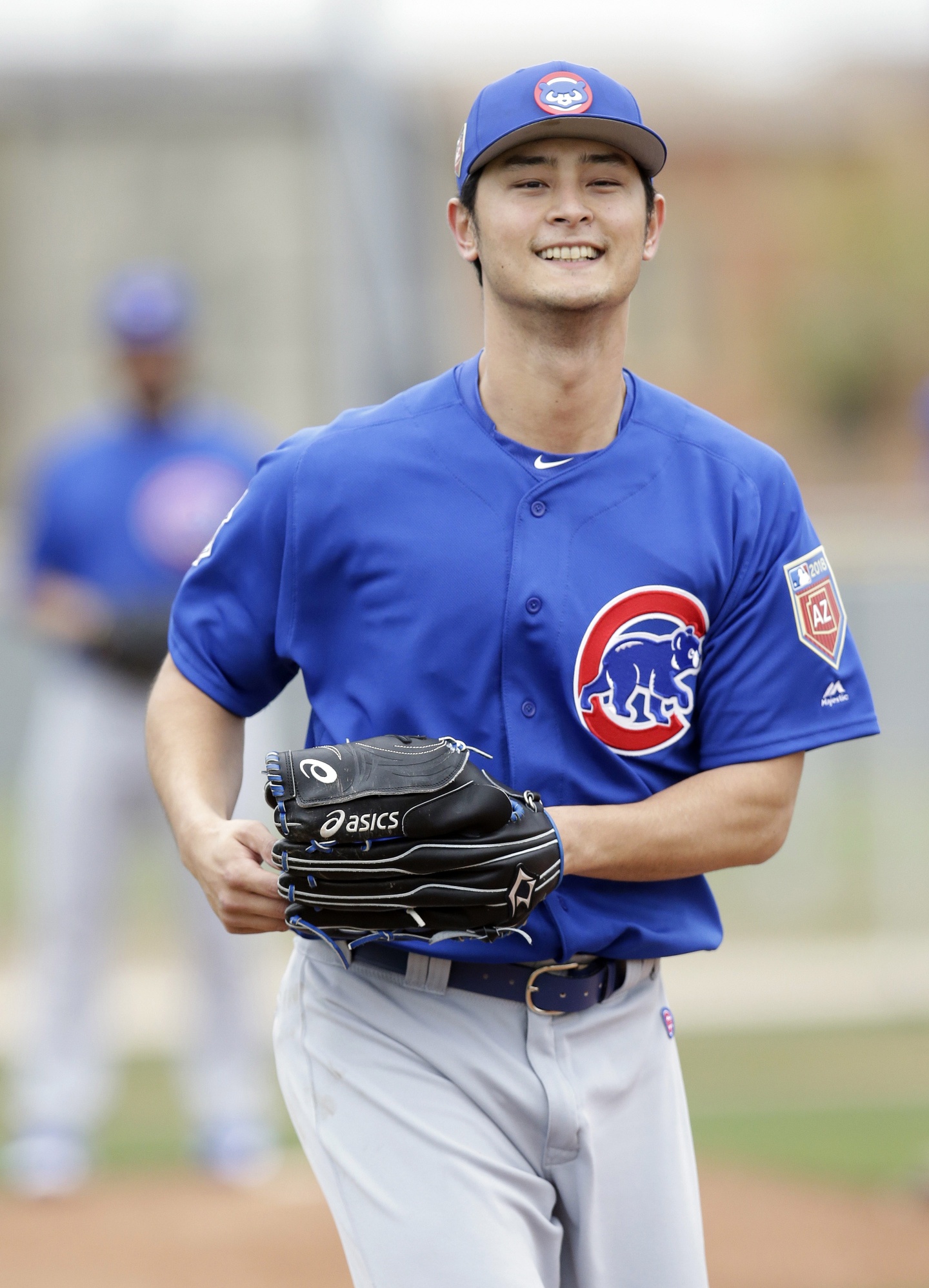It’s crazy how one move can change the perspective of an entire offseason, yet here we are.
If you were to write the Cubs’ needs on paper and listed them when the offseason began, how many holes needed to be addressed? They needed a frontline starter, rotation depth, bullpen help, a closer, a lead-off man and maybe a resolution to their center field logjam.
Fast-forwarding a few months to the beginning of spring training, how’d they do? Let’s recap based on the priority of each of the team’s needs going into the offseason.
1. Frontline Starter
This one is pretty much a no-brainer. When the offseason began, the Cubs goal was not only to find starting pitching depth, but also to be able to solidify one of the top spots in the rotation. The team clearly was ready to move on from starter Jake Arrieta and fortunately enough for them, the market fell their way. While the Cubs weren’t expecting to be players for Yu Darvish, as Cubs’ President of Baseball Operations Theo Epstein mentioned during Darvish’s introductory presser, the weird free-agent market this year along with other major markets not being able to afford him because of the competitive balance tax made the acquisition of Darvish easier. He’s also a steal at six years and $126 million. Put this in perspective, Darvish’s AAV will be just $5 million more than the Cubs paid John Lackey over the past two seasons ($16 million from 2016-2017). If the Cubs win a World Series over the course of the six years, not only will it be worth it, but the deal will pay for itself.
1a. Starting Pitching Depth
The team began the offseason with an under-the-radar move, adding RHP Tyler Chatwood who will go into the season as the team’s fifth starter. They also added LHP Drew Smyly, who is coming off of TJ Surgery, but who is a nice depth piece when he returns in mid-to-late June. Add that with the Darvish signing, and it gives the Cubs a very formidable rotation going into spring training.
2. Bullpen Depth
Besides adding Darvish which was the team’s “Grandiose” move, this is the best group of moves the Cubs made. Re-signing Brian Duensing was a boost after his strong season. Steve Cishek was also a nice low-risk, high-reward move giving the bullpen another option with the bonus of being a different arm-slot guy. Smyly also helps here as a swingman. With Carl Edwards Jr., Pedro Strop and Justin Wilson serving as late-inning anchors, the Cubs should be stronger in the ‘pen this year.
3. Closer
Arguably the most disappointing move the Cubs’ made was how they addressed their closer situation. While Brandon Morrow was a solid addition to the bullpen, as I mentioned in my piece yesterday, there are reasons to be wary of him closing for the Cubs in ‘18. Wade Davis wasn’t Kenley Jansen, but he was still pretty damn good last season and the fact that the Cubs are attempting to replace him with a guy who almost has as many trips to the disabled list as saves is a bit concerning despite being excellent for the Dodgers 2017. Hopefully, they will not regret putting him in this role, but this of all the Cubs’ decisions has the highest chance of backfiring.
4. Leadoff hitter
While this was not as big a need as some of the other things on this list:
1. This was one of the reasons the team struggled to find consistent offense at times in ‘17.
2. They didn’t address it in trade/FA market
3. KYLE SCHWARBER IS NOT A LEAD-OFF MAN
The fact that Joe Maddon has not ruled out the possibility of seeing Schwarber in the top spot again this year, is a bit disconcerting. While the best person to fill the role is probably **Cough** Kris Bryant **Cough**, the Cubs are going to have to find a fit and hope it doesn’t cause the team to sputter like last season. Unfortunately, that may mean seeing more of Ben Zobrist than we probably should.
So how do the Cubs look as spring training begins?
Both St. Louis and Milwaukee did their best to be in a better position to compete with the Cubs for the top spot in the NL Central. The Cardinals added Marcell Ozuna, while the Brewers added a pair of stud outfielders in Christian Yelich, Lorenzo Cain and will likely add a few starters to their rotation. Cubs’ general manager Theo Epstein stated at the Winter Meetings that the team couldn’t be reactionary because of another team’s moves. While that may be the case, making the biggest free agent addition this offseason being able to fill a majority of the team’s needs has to feel good going into spring training.
Being able to fill four of your team’s five needs is great. Considering that they were able to fill their needs and did it without having to move any player on their current major league roster is actually great. Prior to Darvish signing on Saturday, the offseason moves felt incomplete and resembled a failure rather than a success based on the money the team had to spend and the pieces they had to move. But having that deal done to go along with their other moves, this offseason was wildly successful.
Are the Cubs the best team in the National League?
They are in the conversation along with likes of the Los Angeles Dodgers and the Washington Nationals for that top spot. There is every chance that each, barring injury, will be considered the best in the NL, if not all of baseball, at some point during the 2018 season. It should be fun.
Lead photo courtesy Rick Scuteri—USA Today Sports
